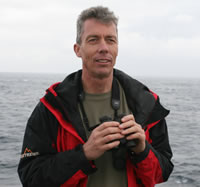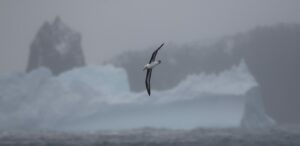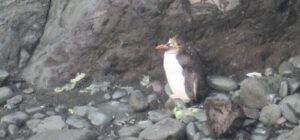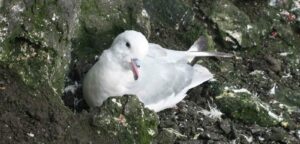 By Peter Ryan, onboard scientist, expert in general ornithology, seabird-fishery interactions, evolutionary ecology, marine debris, solid waste management, biology of oceanic islands.
By Peter Ryan, onboard scientist, expert in general ornithology, seabird-fishery interactions, evolutionary ecology, marine debris, solid waste management, biology of oceanic islands.
Leg 2, Scott Island
We arrived off Scott Island late on our second 5 February, and a brief clearing in the grey skies and light snow had the chopper team scurrying to ready the helicopters. However, the snow set in again and we mooched around looking for possible trawl sites overnight. 6 February continued in the same vein, with snow flurries preventing any flying. Finally, with time running out, the snow stopped for long enough for Sergio to put a small number of people ashore (perhaps appropriate given the modest scale of the island).
The island plateau was covered in a deep layer of fresh snow, which made it hard to find any bird nests, but despite finding plenty of old feathers, all crevices and cavities explored were packed with ice. The only sign of possible breeding was on the northern and western cliffs, and Haggit’s Pillar, which had several Southern Fulmars on the ledges (the only vaguely accessible bird was loafing), and were being inspected by a few Wilson’s Storm Petrels. Despite the large flock of more than 300 Cape (Pintado) Petrels sitting just offshore (and being quite vocal), there was no sign of them breeding. The only other bird seen was a lost immature Macaroni/Royal Penguin that was moulting on the eastern beach.


